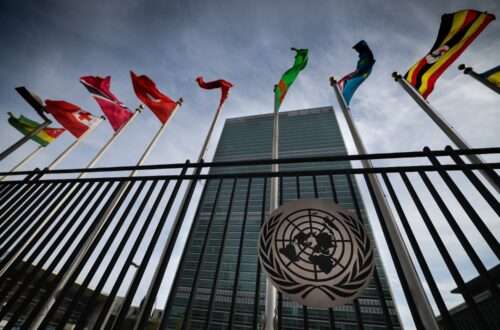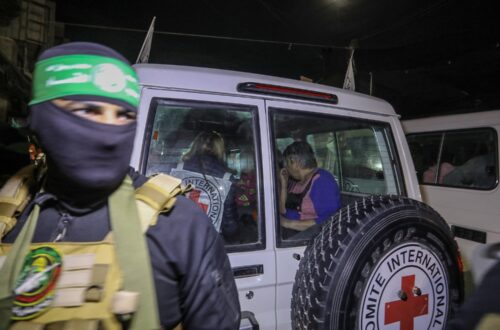On Saturday afternoon a familiar news update came in. Six people had been wounded by gunfire in a private home in the northern town of Kafr Kanna.
News of killings in the Arab community are broadcast every day or so and the numbers are skyrocketing. It’s no longer only individuals being killed, but mass killings of four or five people at a time. On Saturday it went up another notch as a gunman entered a private residence and shot everybody inside.
One mass shooting took place in June, with five people murdered at a carwash in Yafa an-Naseriyye. The attack claimed the lives of two members of the Marjiya family, including a 15-year-old boy. Also killed were Ibrahim Shehadeh, Loee Rajab, and Mohammad Knana.
Just a few days ago there was another mass shooting in Abu Snan. Gunmen killed Ghazi Sa’ab, who was running for mayor. Three others were shot to death with him, Zohair al-Din Sa’ab and Amir Sa’ab, along with Salman Halabi.
More than 90 percent of the victims since the beginning of the year are men. A vast majority, according to information from the Abraham Initiatives, an anti-violence monitoring group, are under the age of 30. Almost all the murderous attacks are shootings.
But as the news broke from Kafr Kanna on Saturday, the television stations paid no attention. I checked for an hour after the first report, exactly at the time of the Saturday afternoon talk shows.

Police at the scene where five people were shot dead in the town of Yafa an-Naseriyye, June 8, 2023. (Fadi Amun/Flash90)
The Kan public broadcaster’s “Everything is Political” broadcast an interview with Likud MK Boaz Bismuth and then a discussion of whether National Security Minister Itamar Ben Gvir’s recent comments were racist. Finally, it had a pre-planned interview with Ra’am leader MK Mansour Abbas.
Channel 12 was broadcasting its “Meet the Press,” where Abbas also gave an interview. It then pivoted to a debate on the protests surrounding the fatal hit-and-run of 4-year-old Rafael Adana and then continued with a discussion about former US president Donald Trump and an interview with Education Minister Yoav Kisch.
Channel 13’s “The Headquarters” show broadcast an extended interview and panel discussion with Teachers Union chief Ran Erez.
Imagine if a man had burst into a private residence in Kfar Tavor, Yokne’am, or Nahariya and opened fire on the occupants. Imagine if a terrorist had entered a home in a West Bank settlement and shot everybody. Would the TV channels have continued with scheduled broadcasts? Even when just one person is killed in a terror attack they break to live coverage from the scene.

Prime Minister Benjamin Netanyahu speaks to reporters after visiting the scene of a deadly terror shooting attack in Neve Yaakov, Jerusalem, January 27, 2023. (Olivier Fitoussi/Flash90)
One can say that that a terror attack is not the same as a homicide over a financial dispute. However, political leaders and even the police have long said that the criminal feuds in the Arab communities are the equivalent of terror as they sow fear among the innocent and will eventually spill over into broader Israeli society.
Where do the killers get their weapons? They are smuggled in from the West Bank and Jordan. The flow of arms into Israel is a national danger. In any case, every murder in the Arab community should cause us all to rise up in dismay, even if the TV channels are asleep at the wheel.
The past year has seen a significant rise in coverage of the Arab community and the crime wave targeting it. But it’s not enough. The media would cover shootings in a different way if Jews were involved.
One of the apparent reasons for the muted coverage is that reporters, editors, commentators, and administrators assume that the victims are themselves involved in crime. Ben Gvir, whose ministry is responsible for the police force, said so explicitly in an interview with Channel 12 last week. We can also assume that police brief reporters accordingly. And if the victims were criminals, why give them air time?
But the news channels do not, in most cases, independently check if this is correct. In almost every mass killing or shooting there are innocent bystanders. When was the last time you read or saw an investigation that examined the identity of the victims, why were they killed, and if it was true that they were involved?
A second important point is that Israeli TV viewers almost never hear the names of the victims. Online news, like Ynet, Walla, and Haaretz, name the victims, but it is almost unheard of on television. Bodies without an identity.

Mourners attend the funeral of 66-year-old Salman Khalab in Yarka, northern Israel, August 23, 2023. Khalab was one of four people killed in a shooting in Abu Snan. (Flash90)
The Israeli media has to improve its coverage of this issue, to give an identity to the victims, even when the victims are suspected of involvement in crime. Were they simply designated as “involved in a criminal dispute,” without the police actually knowing the details?
This branding of the bloodshed as perpetrated by criminals against criminals cheapens the blood of many citizens and allows the media to ignore the matter.
In addition to all of this, there are not enough Arab journalists and analysts. Yes, Channel 12 added to their lone reporter, Furat Nasser, the impressive commentator Mohammad Magadli. On Channel 13 we get to hear Ali Mograbi and occasionally the analyses of Frida Jabar, one of the owners of the Arabic-language Panet news site. However, she is not a regular and does not have a daily presence. On Kan, Suleiman Maswadeh stands out.
But this is a fraction of what’s needed. The Arab population makes up 21% of Israeli citizens. The crime in the Arab community is plunging Arabs, Jews, and the residents of mixed cities into turmoil.

Activists march with symbolic coffins denouncing violent crime in Arab communities on August 6, 2023 in Tel Aviv. (Jack Guez/AFP)
The underrepresentation of Arabs in the media in general and on television in particular is a tragedy. The media channels need to find and train appropriate reporters and commentators. Filling the hole with just one or two people cannot continue.
This is about ensuring permanent visibility for the faces and accents of members of the Arab community on TV, as well as broadcasting content from Arab society — of course, not only coverage of the violence but of all issues related to a huge minority in Israel.
In the last decade, the Israeli media managed to improve the representation of members of the national religious community. The late Uri Orbach’s “The Best Should Go Into Media” article from 1998, where he called on national religious youth to join Army Radio for military service and then integrate into the media, was widely accepted and revolutionized the press.
According to estimates, the national religious camp makes up about 10% of Israeli society and today has broad representation in the studios. The time has come to raise the profile of Arab society as well.





